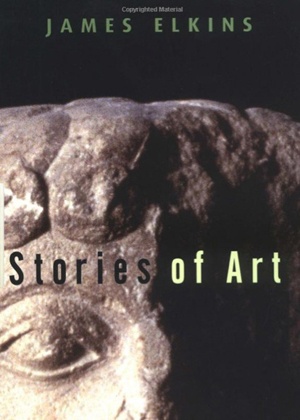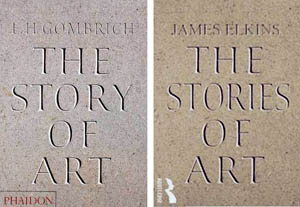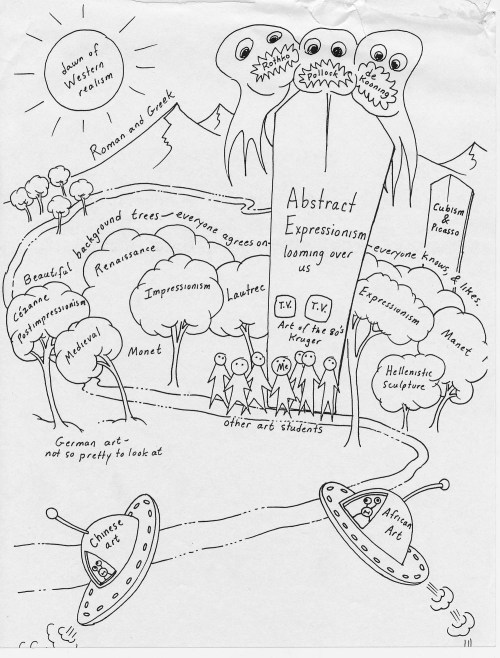Read chapter 1 in pdf format
Or buy on Amazon.
 This short text is an answer to E.H. Gombrich’s worldwide bestseller Story of Art. (The single best-selling art book in any genre.)
This short text is an answer to E.H. Gombrich’s worldwide bestseller Story of Art. (The single best-selling art book in any genre.)
Stories of Art tells many stories of art, while Gombrich’s tells only one. His story, which has become influential around the world, is about the rise and fall of naturalism in Western art. Even though he only meant his book to be a primer for children, it crystallized the central story that is implicit in many other survey texts, and it continues to have enormous influence. This book is intended as its antidote.
I present many different histories of art, from India, Japan, Iran, Turkey, Australia, Poland, Cambodia, and elsewhere, in order to show that the single story of art has many alternates.
Chapter 1, available here, includes a class exercise I’ve done many times, in various countries: it’s described in the caption below.
 At one point in the design process, I made a mock-up of a cover that would mimic the then-current cover of Gombrich’s book, but the editors thought it might invite a lawsuit.
At one point in the design process, I made a mock-up of a cover that would mimic the then-current cover of Gombrich’s book, but the editors thought it might invite a lawsuit.

The book opens with examples of imaginary maps of art history. Some are drawn by students, like this one; others are drawn by professors of art history. The exercise is a wonderful way of revealing how you think about art history. In this case, the student admits he doesn’t understand Chinese or African art. He said he knew his UFOs weren’t p.c., but that is how he felt.
 One of the purposes of the book is to ask about how history feels, how it is intuitively experienced, and therefore what in it is genuinely experienced, felt, engaged “from the inside” as opposed to “from the outside” — that is, from the interests and obligations of academic life.
One of the purposes of the book is to ask about how history feels, how it is intuitively experienced, and therefore what in it is genuinely experienced, felt, engaged “from the inside” as opposed to “from the outside” — that is, from the interests and obligations of academic life.
Asking about non-Western histories is not only a way of critiquing the standard Western narrative (although that is the principal argument of the book): it is also a way of asking about what, in art history, can be immediately present to the writer, as the subject of history.
That “hidden” theme is the motivation for the book, even more than the interest of thinking outside the Gombrich box.